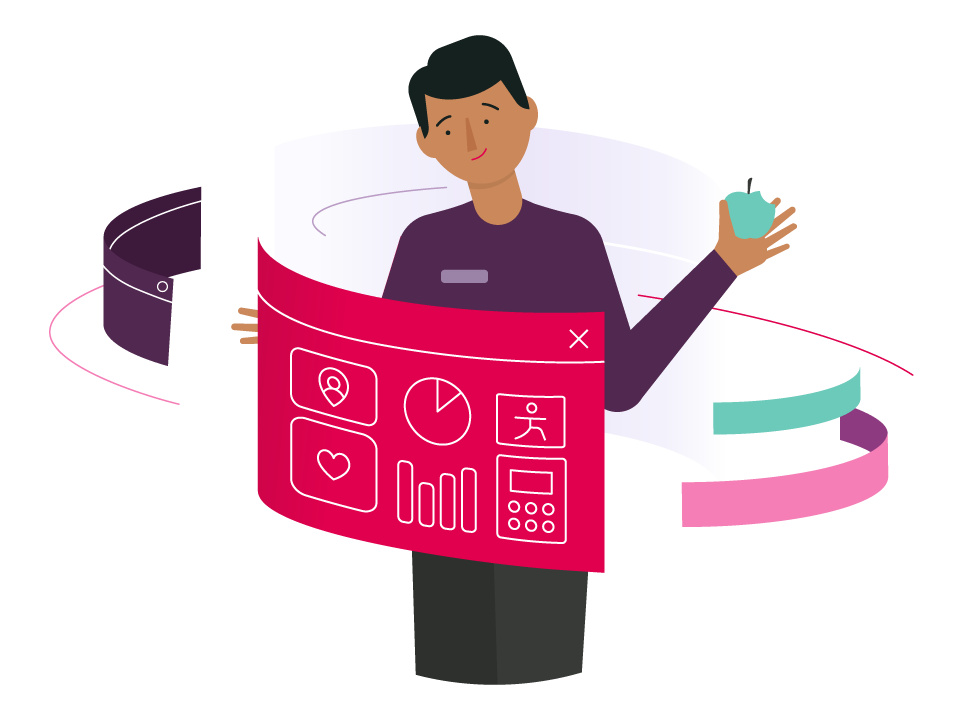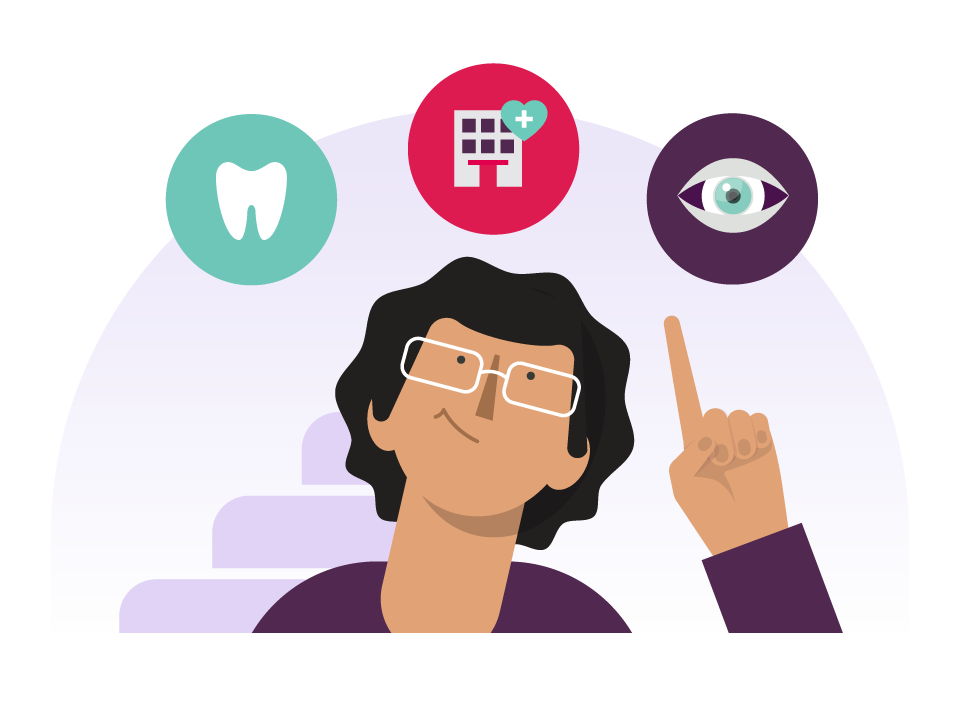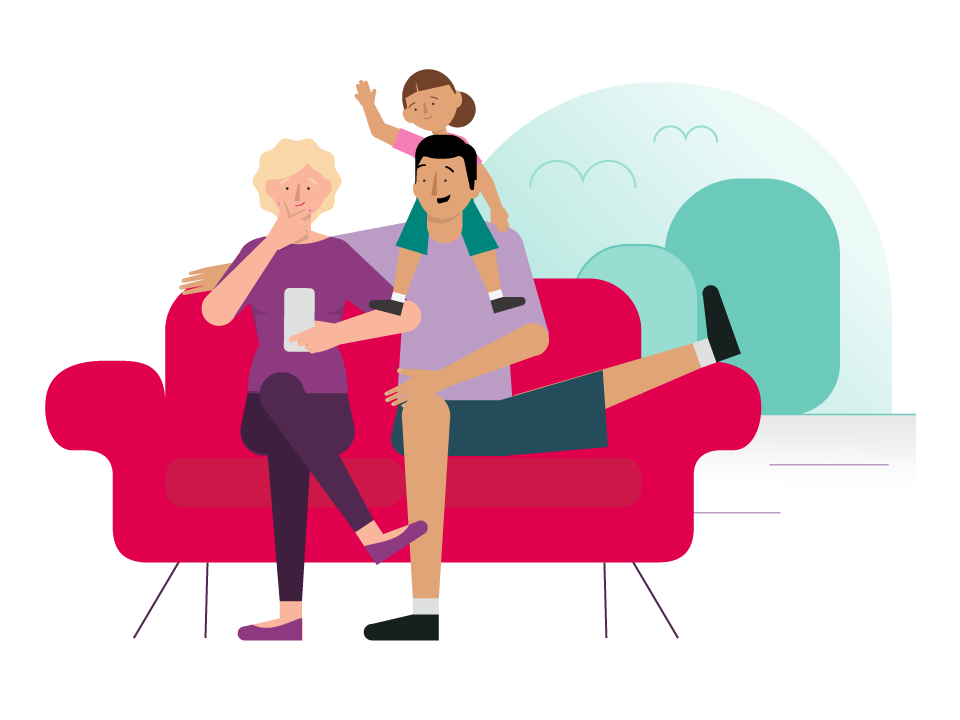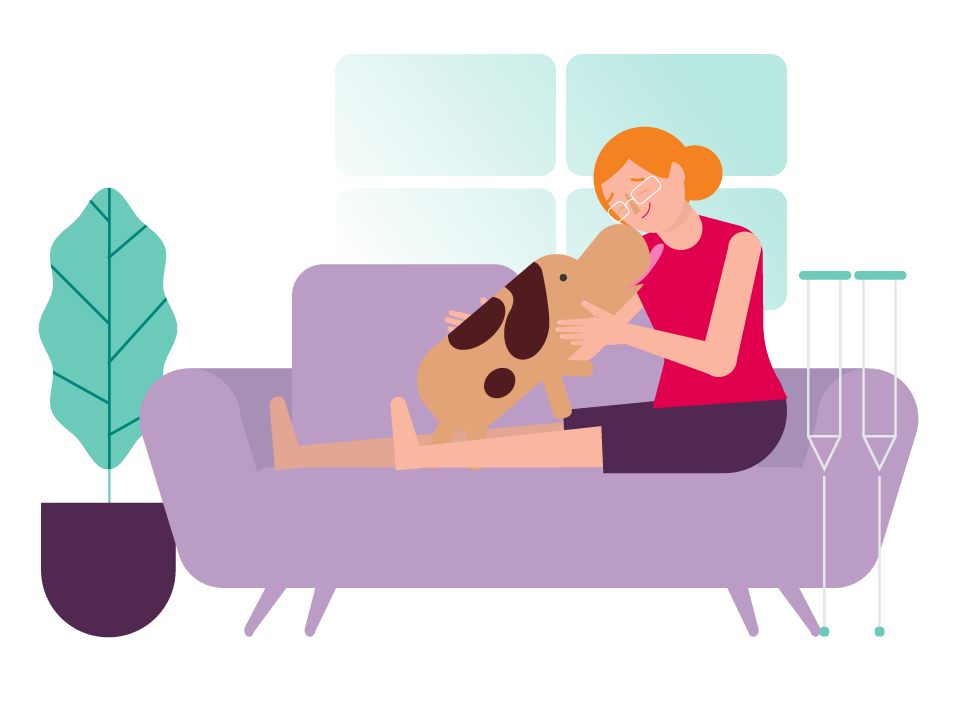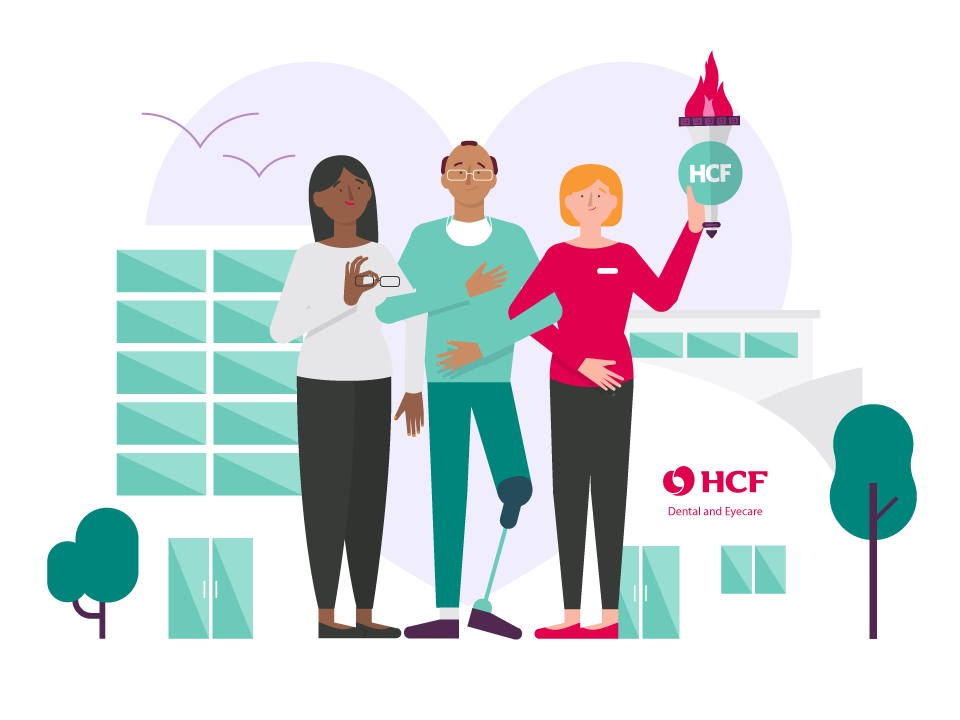After your procedure, you’ll be taken to your recovery room.
Your hospital stay
Nurses will check your pulse, blood pressure, dressings, abdomen and urine output (if you still have a catheter in place). The observations continue every 10 minutes for about half an hour. All being well, you’ll be taken back to the ward for the rest of your recovery.
The midwives will check your incision and apply a dressing if needed.
You'll usually have an IV drip for the first 24 hours or so. This helps to replace any fluid lost during the surgery, and keeps you hydrated until you can eat and drink normally. You may also have a tube to drain fluid from the incision, which will be removed after a day or so.
Pain relief
If you’ve had an epidural, the cannula may be left in place to help with continued pain management, or you may be offered injections of pain-relieving medication.
Patient controlled analgesia (PCA) is often used in the first day or so. This is an opiate drug delivered through a cannula into a vein. You can control the amount of pain relief you receive by pressing a button.
Injections of pain-relieving medication can be delivered by cannula or into a muscle.
Pills, tablets or liquids can be given at regular times, or when pain starts to bother you.
Bear in mind that medications can also affect your baby when you breastfeed.
In addition to pain from the incision, you may also have pain in your shoulders for the first few days due to air entering your abdominal cavity during the surgery.
Your hospital stay
The length of your hospital stay will vary, but on average it’ll be between 4 and 6 days.
You may be surprised that your nurses will encourage you to stand up quite soon after surgery. This is to speed your recovery and reduce your risks of complications. You’ll usually be helped into a chair, and possibly take a small walk soon after your surgery.
Nurses will also encourage you to take deep breaths after your surgery and a physiotherapist will help you with exercises that expand your lungs. Because of your incision, this may be painful.
While you’re in hospital you’ll spend time resting and establishing your milk supply and getting used to breastfeeding. The breastfeeding nurses will be there to help you with this.
Going home
When you go home after a caesarean birth, you’ll need some extra help from family to care for your baby until you’re feeling physically stronger.
You may want to think about how you’re going to manage this before the birth.
Managing bleeding
Even though you’ve had a caesarean, you’ll still have vaginal bleeding after the birth and it can be quite heavy. Have some maternity sanitary pads on hand.
Underwear
You’ll need some high-waisted, comfortable underwear that won’t rub on your incision.
Caring for your incision
A nurse will show you how to manage your incision. It’ll be covered with a waterproof dressing and you should be able to shower with it on. Avoid swimming and bathing until the incision has healed.
Managing pain
If you have pain, ask your doctor’s advice about the best type of painkiller to take. Some painkillers can enter your breast milk and affect your baby.
Managing constipation
Constipation is common after childbirth so maintain a high-fibre diet and drink plenty of fluid.
Stretching, lifting and bending
You need to be careful and will need help with hanging washing or lifting anything heavier than your baby. Try and avoid lifting other children.
Driving
Ask your doctor when it’ll be okay to drive. They’ll probably recommend you avoid it until your incision has healed and you can brake suddenly without feeling sharp pain. This is usually around 6 weeks. Don’t forget to also check with your car insurance company in case they have any restrictions following an operation.
Check-ups
You’ll need to make an appointment with your obstetrician for a check-up 6 weeks after you leave the hospital. In the meantime, you should take your baby to your GP, paediatrician or a baby health clinic for a check-up during the first week after the birth and again when your baby is 10 to 14 days old. If your baby has any health problems, such as unexpected weight loss or jaundice (yellowing of the skin), you may need to see a paediatrician more often in the first few weeks.
Watching out for problems
Baby blues and postnatal depression
Emotional changes affect around 80% of new mothers, starting around 3 days after birth. They can include anxiety and feeling weepy. Most women recover but around 10–20% go on to develop postnatal depression. If you’re affected, it’s important to get help early. Talk to your GP or child health nurse.
Mastitis
Mastitis is an infection that commonly affects breastfeeding mothers. You may have a red, hard, hot area on your breast that doesn’t clear with breastfeeding. You may also have flu-like symptoms such as aches and pains, shivers and a high temperature. Mastitis can be treated with antibiotics. If you think you have mastitis you should make an urgent appointment to see your doctor. Massaging towards the nipple and feeding the baby on that side first can help to drain the infection.
See your doctor as soon as possible if you experience:
- fever
- severe headache that doesn’t ease up (following an epidural)
- sudden onset of abdominal or incision pain
- blood loss that starts to smell
- discharge from the incision
- swollen, red, painful area in your leg(s)
- painful urination or blood in your urine
- a rash or hives
- extremely heavy vaginal bleeding or passing large clots
- symptoms of mastitis
- emotional problems.
